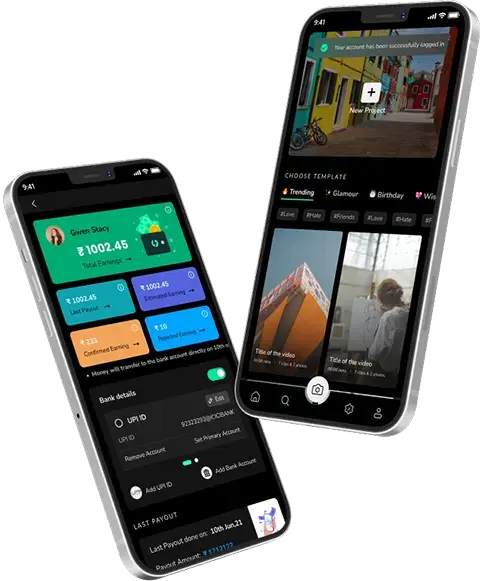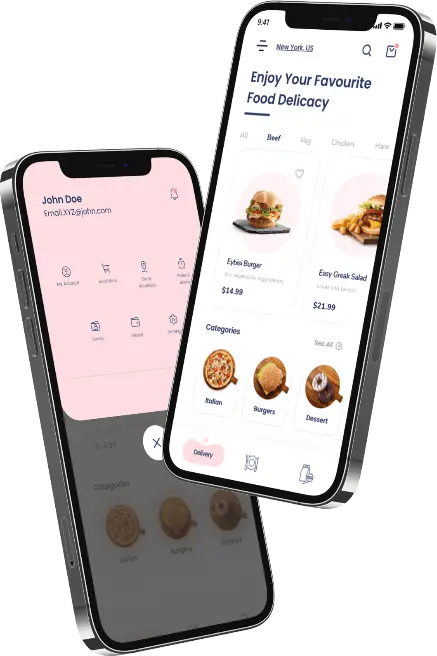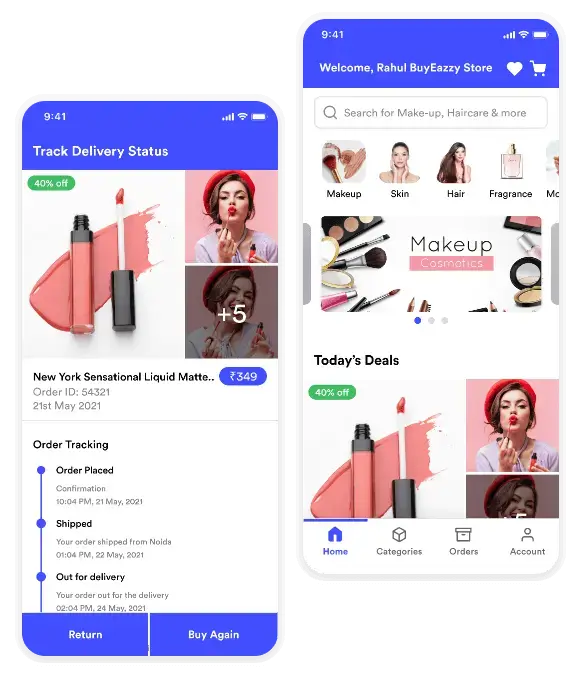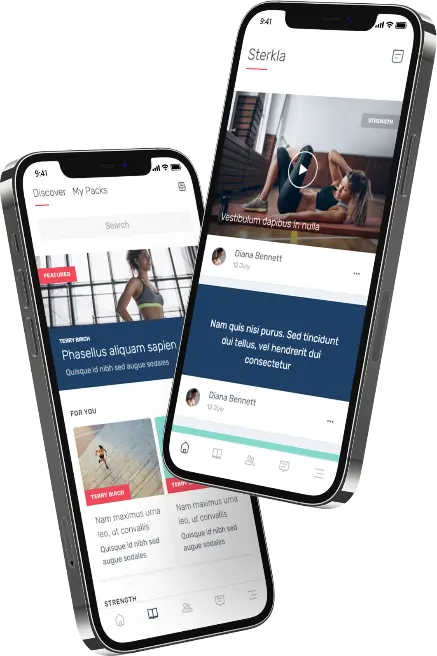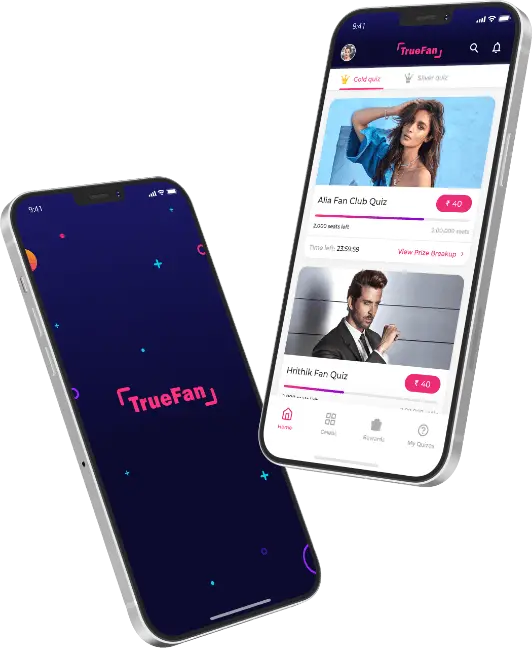In the current fast-paced world, every startup owner is constantly looking for innovative and efficient methods to convert the million-dollar concept into a practical business strategy. Innovative ideas are popping up in an era where the desire to become the first to market is the main motivation for companies. However, not every great idea can become a popular product because it has to undergo several stages of development and testing before you know whether it’s an absolute success. PoC (Proof of Concept), MVP (Minimum Viable Product), and prototype establish the basis and quality of digital products. These three strategies will help you test your product concept and ensure that it is market-ready prior to investing significant money in its creation.
Many entrepreneurs spend their cash, time, and even other funds studying their ideas before coming up with them and obtaining feedback from prospective clients. Whether you’re taking your first steps in the business world or are an experienced developer, knowing these fundamentals is vital when getting your idea off the ground. In this blog, we will examine the difference between PoC vs Prototype vs MVP and explore the best options for startups.
So, let’s get started!
What Is PoC?
A proof of concept sounds like an obscure word you’ll get from a researcher at a laboratory; however, in the context of startup companies, they play a vital part. Proof of Concept (POC) within IT development evaluates and tests the proposed technology or solution before committing to a large-scale design project. It’s a method to verify the effectiveness and efficiency of a strategy and pinpoint possible issues or obstacles that need to be resolved. POCs are used to validate the feasibility and effectiveness of a particular approach.

POC generally involves developing an initial prototype of a device or system that showcases the solution’s essential capabilities. The prototype is later assessed and tested against the plan’s needs and objectives by the startup app development company. The POC can also comprise the feasibility study that evaluates the proposed solution’s technical, financial, operational, and other aspects.
A POC aims to show that an idea merits further exploration and assist the team working on it in making informed decisions on how to proceed with the idea. POCs also allow you to identify any possible problems or risks associated with the proposed solution and create a plan that addresses these issues before proceeding with the full development.
Also Read : Supercharge Your Startup How MVP is Your Secret To Rapid Sucess
Apart from providing a method to test technologies, POCs may also be utilized to test the effectiveness of new strategies and business models. POCs are commonly used within IT initiatives, however they could be employed in different areas like construction, manufacturing, or transportation. Ultimately, POCs are vital to the development process because they ensure that resources are directed to the best solution and that development teams advance with a solid knowledge of what is possible, what’s not, and what problems might need to be dealt with.
Also Read : What Does It Cost To Develop A Construction Management Software Like Procore?
How Does a Proof Of Concept Work?
PoC is an internal initiative carried out during the beginning of the development of your product. The process of creating PoC includes:
- An organized business plan will help you view your venture differently.
- Design for a simple introduction.
- Check the core concept of your app idea to resolve the most pressing issues and internal processes flow. The results are not intended to be presented to customers.
- The PoC confirms the idea’s viability regarding technical capability, resources, and tools. If your concept can be technically viable, you can move on to the next development step. If your plan does not work at this stage, PoC helps you save important time, resources, and money while developing a product.
Reasons To Develop POC
The process of creating the Proof of Concept (POC) during product development is extremely beneficial for startups. A few of these advantages are the following:
- The POC shows that a specific idea or technique is feasible and could resolve a particular problem or fulfill a particular requirement.
- A proof of concept will help startups identify scalability, technical, or usability problems before committing to an entire development plan.
- POCs are used to determine a project’s feasibility. They are a tool for assessing an idea’s viability and calculating the necessary resources to complete it.
- POCs are used to demonstrate a project’s value. They are a way to highlight the venture’s benefits to those involved in it and to gain the support of stakeholders and their buy-in.
- POCs could be utilized to assess strategies, alternatives, designs, or technologies and decide which is best.
- POCs are a great way to gain experience. They could also be an excellent chance to acquire knowledge and experience the latest technologies, techniques, tools, and methods before deciding whether to proceed with a project.
- POC could be utilized to show investors that a business idea is a viable concept and the value of the item.
What Is a Prototype?

The term “prototype” refers to a design of a product utilized for testing and demonstration reasons. Prototypes are often designed to investigate different designs and alternatives for implementation or to show the capabilities of the product’s final people involved. They can be either low-fidelity or high-fidelity, based on the degree of detail and the needed functionality.
Prototypes with low-fidelity, like mockups and wireframing, visually represent the design and function. In contrast, high-fidelity prototypes can be more intricate and interactive, usually resembling the finished product. Prototypes are used by mobile app development company in USA to investigate different design possibilities, evaluate user interaction, and gather feedback from those who have a stake in the product and even potential users.
They are typically created earlier during the app development process and used to verify the design choices and identify usability problems before moving to the actual design of the item. This is an essential stage in the development procedure as it ensures that the final product aligns with the user’s and business needs and is simple to use and comprehend.
How Does Prototyping Work?
The development of a prototype begins with the product’s owner specifying the objectives and requirements for the system to develop a viable prototype with an initial concept.
- After the initial design is finished and the prototype created, it is time to brainstorm the basic layout to pinpoint the most important features and functions.
- The design of your prototype is determined by the specifications and features of your product that you want to demonstrate and test.
- Collect important feedback and observations on your product prototype. You can enhance your idea, gain useful insights, and make well-informed decisions to ensure the success of your product’s creation.
- Prototypes can be paper-based (hand-drawn wireframes), digital (UI mockups and interactive versions), or miniature (IoT products). They serve a range of purposes, whether you’re trying to showcase the design of your product or dive into complicated algorithmic processes.
Reasons To Develop Prototypes
There are many reasons why developing a prototype for product development could be advantageous:
- Prototypes can help demonstrate a program’s functions to users and stakeholders, assisting them in understanding and offering feedback about the product’s usability and design.
- A prototype can be used to test and iterate the user interface, including the navigation of buttons and forms, to ensure that the finished product is easy to use and comprehend.
- The prototype is a great way to determine and resolve problems with usability before the final product is designed. This can save time and money over the long term.
- Prototyping lets you explore diverse design alternatives, which helps ensure the end product meets both business goals and user expectations.
- The prototype is a way to show investors the potential of a business idea and the viability of a product.
- Prototypes can be ideal learning tools for experimenting with new tools, technologies, and methodologies before committing to an entire project.
What Is An MVP?
An MVP is a minimum-viable product. This is distinct from the Proof of Concept (PoC) or prototype since it’s a product with a few functions designed to meet the end-user’s requirements. The MVP aims to verify the business concept and determine the product’s market fit effectively and quickly as feasible.

The typical MVP usually only includes the essential features for the product to function and offer the value to early customers. Other features and enhancements may be added in the future when the product is developed and the number of customers it serves.
Also Read : Why Does Your App Require MVP Model?
Creating an MVP allows companies to get feedback from users at an early stage of development. This helps them make the right decisions based on data and continue to improve the product. This method helps reduce the possibility of developing an unpopular product and increases the chances of success.
How Does An MVP Work?
MVP is the quickest method for providing a trustworthy solution with basic capabilities for your customers. It allows you to determine the product’s strengths and flaws from the first users.
- The first step is the base of MVP and the challenge it is attempting to resolve.
- Choose several features needed to meet the proposition of value. This validates the hypothesis and measures interest while providing early adopters a satisfying experience.
- The goal is to deliver the most realistic user experience by providing a user-friendly solution built with uncluttered code that prioritizes user information and offers feedback on improvement.
- Small does not mean ineffective, as it focuses on value-driven innovation with user-generated insights. This allows the early adopters to gather and analyze the data.
Reasons To Develop MVP
An MVP is very beneficial for businesses, especially startups, to test their ideas and gain user opinions on their product. They also determine what adjustments they must implement to create a successful product. The top benefits of creating an MVP are:
- MVP lets startups evaluate their products by interacting with actual customers and collecting feedback in the early stages of the design process. The feedback is then utilized to enhance the product, making it more appealing to investors.
- Startups can determine whether the product can be positioned quickly and efficiently in the marketplace.
- Creating an MVP lets startups minimize the possibility of creating a product that nobody is interested in by collecting feedback from early adopters and making decisions based on data.
- With an MVP, a startup can test and refine the design based on users’ requirements and preferences and help ensure that the product meets both business and user needs.
- MVP can be used to prove the viability of an idea for a company and the viability of the idea to investors.
PoC vs. MVP vs. Prototype: Understanding The Difference

The proof-of-concept, prototype, and MVP are three different phases within the product development process. The PoC and prototype are employed in the stage before product launch and require a small to medium amount of investment. In MVP development, you move into an actual product stage that includes essential technology stack, functions, and capabilities to determine how people react to your concept. Making an MVP will take more time and resources than establishing a PoC and prototyping.
Also Read : How To Hire A Full Stack Developer In 2025 Best Platforms Costs Key Benefits?
The PoC examines whether an idea is feasible. It tests the technical aspect, which reduces the chance of future software development. It’s typically an internal endeavor and, therefore, isn’t an ideal method for demonstrating the economic potential of your concept to investors. If you’re looking to show how your product will look or perform without creating an actual prototype, it’s the best choice.
The prototype cannot convey the final product’s business design but demonstrates its user interface or specific functionality. It can be sent to a group of people for preliminary feedback. This will allow you to discern their perceptions about the overall idea and identify any areas of confusion. It’s also a great way to gain the attention of investors and get funding to continue designs.
A minimum viable product is an effective product with the essential features that illustrate and demonstrate the business idea you’re trying to establish. This isn’t a fully-fledged product, however. You could use it to gather user data and enhance or improve future options.
1. Difference Between POC And Prototype
The proof-of-concept is a concept that addresses the problem of whether an idea is feasible to be accomplished using a certain technology. Generally, a POC can be used to create an internal design project, while prototyping can be used as a first feedback tool to discover more about the workflow and the design. If you are considering the difference between a proof of concept and a prototype, think about their primary function, which is to prove that the idea can be constructed and build an overall functional product that can be evaluated by users who are the intended customers.
2. Difference Between Prototype And MVP
An MVP is an end-to-end product featuring essential functions. An MVP begins collecting data from users and adding or modifying features to be added in future releases through the course of an iterative procedure. The prototype doesn’t reflect the logic behind your product or address the issues of UI/UX.
However, it could also assist in cutting down on development costs. For instance, if there’s no support from those interested in the prototype, it’s evidence that the next advancement of your idea is not viable from a business standpoint.
3. POC, MVP And Prototype: Different But Related
There are several differences between the three methods which are important for businesses and software development company to understand. It doesn’t mean they aren’t worth using them in conjunction. You could utilize prototypes, POCs, or MVP to complement the other in your complete-stack creation of your product. Learn how you can harness all the advantages of each.

- The first step is to test how your solution will be technologically developed and utilized using a POC. Without this, you’re betting your money on your technology product.
- Create a prototype to sketch the application’s user interface and the journey. Once you’ve done this, you’ll have basic guidelines for creating the interface: which to design first, and how these interfaces will interact.
- Once you’ve got an idea for the POC and the prototype, you can proceed to the MVP. For investors who are early to invest, it is possible to use either the POC or an MVP. However, to get the attention of first-time users, it is recommended that the use of an MVP will do better. There are million-dollar offerings that have received the first users without a working product, but that’s similar to 1 out of millions. The choice is yours to decide whether you want to take the risk.
How To Choose The Right Approach?
It is important to know the product’s point of development in order to determine the best method of verification. Here are the steps you need to follow to accomplish this.
1. When To Select a POC?
POC is the initial phase in developing a fully-fledged product. It is possible to implement this method when the following statements are in line with your goals currently:
- If you are creating a product that hasn’t been tried and evaluated before.
- It is important to verify your concept’s feasibility before investing time, effort, and money into its creation.
- Be sure to confirm the industrial utility of your product to ensure your investment is secure.
If you want to impart your knowledge and product to team members.
2. When To Choose a Prototype?
Once you have created a POC after that, you can proceed to the prototype phase. A few clues to help you determine that you need to develop prototypes include:
- If you want to add the appearance and feel, look at the final result on a large scale.
- You have limited budget and resources to show your product’s UX flow, so you need to attract investors.
- You aim to create an item with a great user experience and flow.
- You have a tight date to present your idea to investors.
3. When To Choose Minimum Viable Product (MVP)?
An MVP isn’t an established product but the most important step in the development process. It is possible to implement this strategy when:
- You’d like to develop your product with the fewest resources and time while ensuring it meets all the specifications.
- It is important to get immediate feedback from users to help build the foundation for future improvements.
- In cases where you want to increase retention for a less expensive price.
Which One Is The Right Fit For Your Startup?

There’s a big difference between proof of concepts, prototyping and the process of creating an MVP. We’ve discussed that every method works best in a specific stage of product development. Finding a definitive solution to this issue is difficult since there is a unique way to approach each industry. What’s the best place to start? Here are a few simple tips to consider when making the decision.
When there are technical issues or risks or you want to ensure your concept will be successful, a POC is the right choice. Its ability to reduce risk at the beginning of development is a major differentiator in POC or MVP. The prototype is the most effective choice when you’re looking to get feedback from users and refine your idea before leaping to full-on development or if you want to test and visualize the design and style of the product before investing in it for the long term.
Selecting a minimum viable product is the most effective method for determining whether or not there’s a target audience for your product and gathering early client feedback. It can help cut costs, speed up market time, and make small adjustments. A highly efficient method of decision-making available to humans is the analysis of market feedback, which can be achieved through the three stages of development (MVP, prototype, proof of concept).
Let’s Wrap Up
The process of starting a business is like creating the perfect masterpiece. Every stroke, every element, and even every color plays a role. The absence of validation for your product is not a choice. To significantly improve your odds of success, you’ll have to incorporate the prototype and MVP in your development roadmap. If you’re trying to promote the most innovative idea of all time, you’ll also have to create the PoC.
Similar to contemplating the form of a PoC, prototype or MVP each has its benefit, ensuring that your company can progress smoothly between one phase into the following. The prototype, the PoC, and the MVPs are all useful instruments in the startup’s arsenal. When you understand their strengths and know when to make use of them, they can help you make educated decisions that will improve your odds of being successful. Always remember, the objective is to get the product in the hands of people as fast and easily as possible so that you can improve and learn to create something extraordinary.
So, to power up your startup with experts by your side, get in touch with Techugo!
Post Views: 1,278




 SA
SA
 KW
KW
 IE
IE AU
AU UAE
UAE UK
UK USA
USA
 CA
CA DE
DE
 QA
QA ZA
ZA
 BH
BH NL
NL
 MU
MU FR
FR











